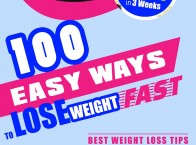Introduction
Coaching is a powerful tool for helping individuals and teams to achieve their goals. Coaches are trained in specific skills that can help clients identify and overcome obstacles to growth and success. The following coaching exercises will assist you in developing your own coaching skills:
Goal Development
Goal setting is an important part of being your best self and making progress in life. It can be a long process, but it's worth it to take the time to do it right. Here are some things that you might want to consider when setting goals:
● What are your top 5-10 priorities? Do they align with your values? If not, what needs to change in order for them to align?
● Are these goals specific enough that they can be measured and tracked? If not, how would adding more detail make them more effective?
● Is there a way you could create this goal as something measurable so that someone else can give feedback on its progress (e.g., "I want 2 hours of quiet time per week," vs "I want my house/office/car organized"). This helps keep yourself accountable!
Growth to Happiness Values Scale (GHVS)
The GHVS is designed to help you discover your values and what you find most important in life. It asks you to rate how strongly you agree with a series of statements about your values, and then assigns a score based on the ratings.
Here's how it works:
● Write down all the things that are important to you in life.
● Go through each item from step 1 and write down examples of when that value was important for you, or when it caused problems for someone else (e.g., "family" might include examples like "helping my parents with chores", but not necessarily "my cousin's wedding"). This ensures that we're rating our actual values rather than just thinking about them abstractly (which can be difficult).
● Rate each example on a scale from 0 (not at all true) to 5 (extremely true), depending on how strongly the example matches up with your stated value(s). Leave some time between each one so that they don't bleed into each other! You'll need enough time between responses so that they're fresh in your mind-if one takes only five minutes while another takes thirty minutes, then go ahead and take thirty minutes between those two responses no matter what order they come after each other."
Personal Values Scales (PVS)
● How to use the Personal Values Scales (PVS).
● What it measures. The PVS is a 30-question survey that measures your values in six different areas:
● Self-Actualization: The desire to realize your potential and make the most of life's opportunities.
● Affiliation: The desire to have meaningful relationships with other people.
● Creativity: The desire to express yourself through art, music, or writing.
● Power: The desire to influence others and control situations around you. This can include gaining leadership roles or being recognized as an expert in your field (e.g., getting tenure). It could also include building wealth and influence through business ventures or political ambition.\
\t\t\t\t*How can I use this information? You can use the results from this test as a way of assessing where you stand on these dimensions-and how well they align with other goals you've set for yourself-to determine which ones are most important for you right now.*
Conversational Exercise: Your Fire
What is the conversational exercise?
The conversational exercise is a conversation between two people that leads to one person identifying their own "fire" (a passion and an inner drive). This process involves asking questions that are designed to help you remember things about yourself, like what your dream job would be, or what kind of house you want to live in. In doing so, you'll learn more about yourself and how you want to live your life.
How does it work?
You'll start by sitting down with someone else who's doing this exercise as well (if there aren't any other people around who are doing it at the time). You'll alternate asking each other questions about yourselves until one of you has identified their fire. For example: "If I had all the money in the world and no responsibilities whatsoever, what would I do?" Or "What's something I've always wanted but never had?" Or even "What makes me feel alive?" These questions will help guide each person toward identifying their own fire-which will look different for every person-but here is an example:"I want my fire," says John Doe."What do you mean? What doe this mean?" asks Jane Doe."It means my passion," says John Doe."So what's yours?" asks Jane Doe
Gender Stereotypes at Work Scale (GSWS)
The Gender Stereotypes at Work Scale (GSWS) is a tool that can help you determine whether your organization has an unconscious bias toward hiring men over women. It was developed by researchers from the University of Washington, and it's one of the few gender-bias scales that has been validated for use in organizational research.
The scale consists of 27 items that measure how strongly you believe in traditional gender stereotypes about work (e.g., "Men are better at math than women"). You'll rate each item on a five-point scale (1 = strongly disagree to 5 = strongly agree). Your scores will fall into three categories: pro-male; neutral; or pro-female. If most of your answers are in the pro-male category, then this suggests that your organization may have some unconscious biases against hiring women for certain jobs or positions-and that these biases affect their salary negotiations as well.
Overcoming Inequality and Discrimination Questionnaire (OIDQ)
The Overcoming Inequality and Discrimination Questionnaire (OIDQ) is a tool for measuring perceptions of inequality and discrimination. It's an online survey that asks respondents about their views regarding the treatment of various social groups-including people who are LGBTQ, disabled, and members of minority ethnic groups.
The test can be used to measure perceptions of inequality and discrimination among different populations by asking questions about fairness in treatment by different groups. The results are broken down into four categories:
● Perceived Equality
● Perceived Discrimination
● Perceived Intergroup Relationships Between Social Groups
● Intergroup Attitudes
Core Values Identification & Contentment Assessment (CVICA)
The first exercise is called Core Values Identification & Contentment Assessment (CVICA). This exercise can be used to help you identify what you value most in your life and to help you feel more content with the things that make up your daily routine.
A great way to use this technique is to take 15 minutes out of your day, sit down at a quiet place, and focus on yourself. Relax and think of all of the things that bring you joy or happiness in life-things like spending time with family, having fun with friends, working out and exercising regularly, eating healthy meals... whatever brings meaning into your life! Once you've identified these things (and any others), write them down on a piece of paper or type them into an electronic file so that they'll be there for later reference when we do our next exercise: CVICA Part 2!
These exercises can help you reach your goals.
The exercises in this guide are designed to help you reach your goals. They're free, easy to use and can be done on your own time.
They're also fun and engaging. And not just for people with coaching goals. Anyone who wants to get better at something can benefit from these exercises-you don't have to be an athlete or a coach to use them!
Conclusion
I hope you've enjoyed reading about these exercises and that they have inspired you. If you are still feeling unsure or want to learn more, please feel free to contact me or my team at any time! We would be happy to help.

 Share on Facebook
Share on Facebook





















